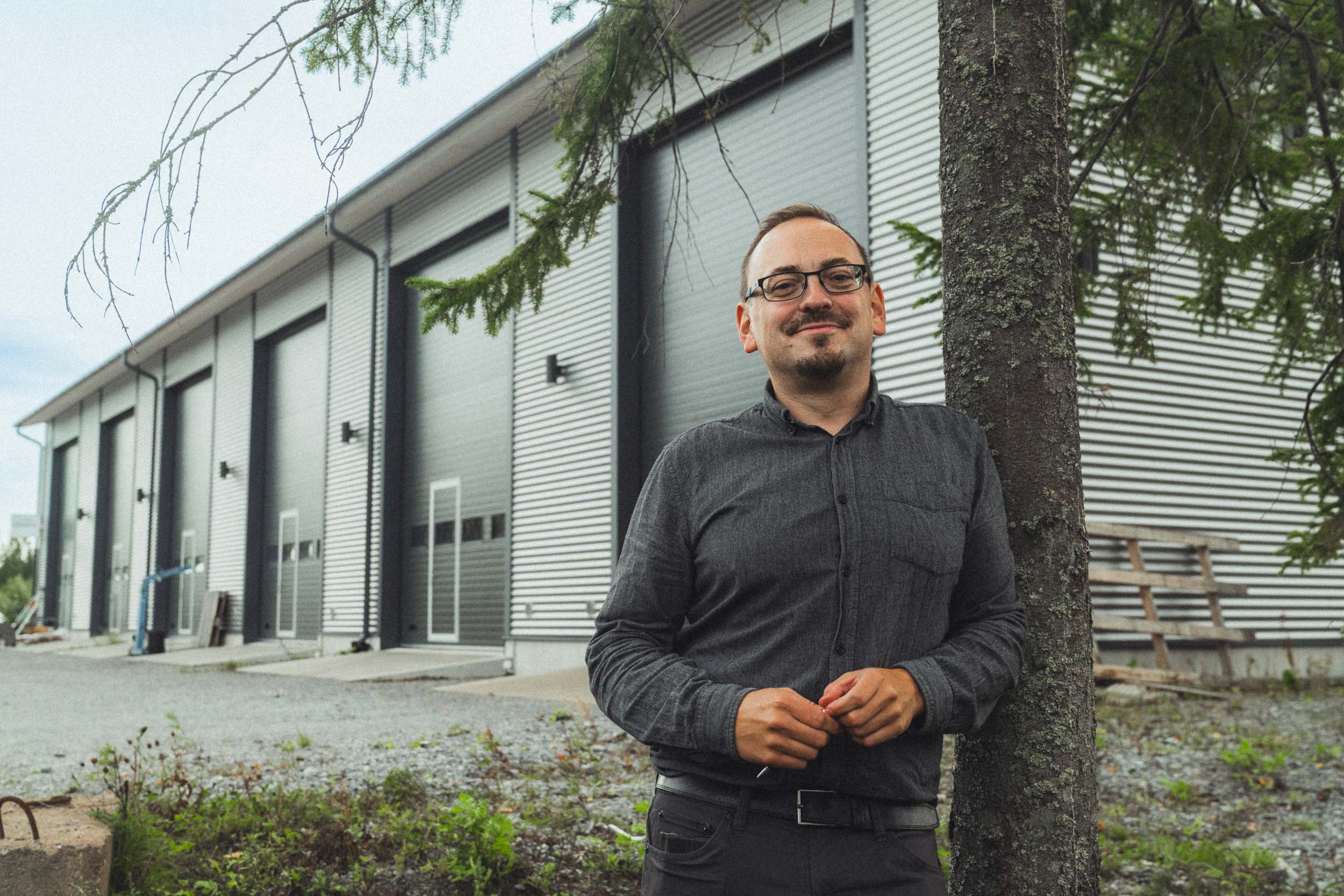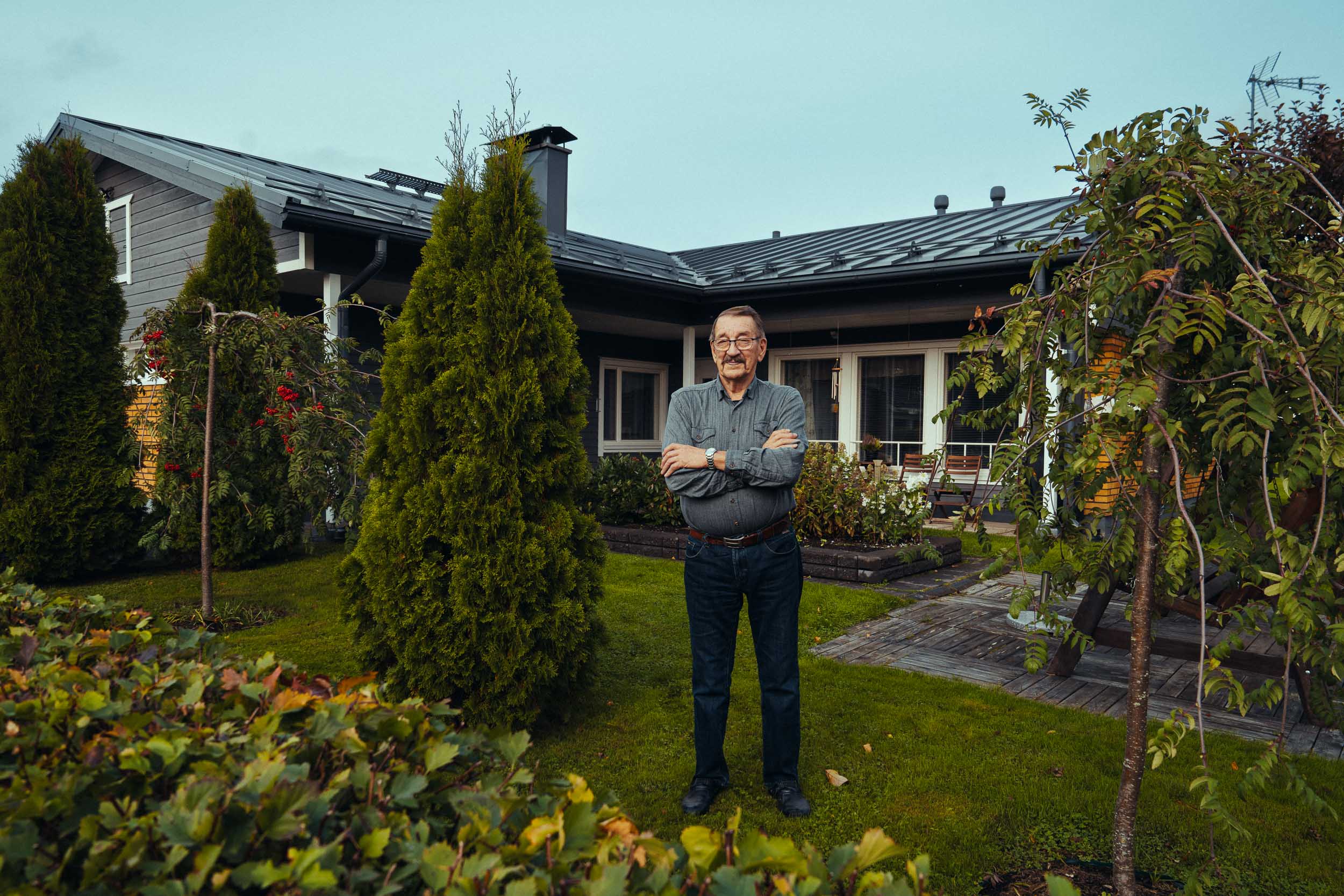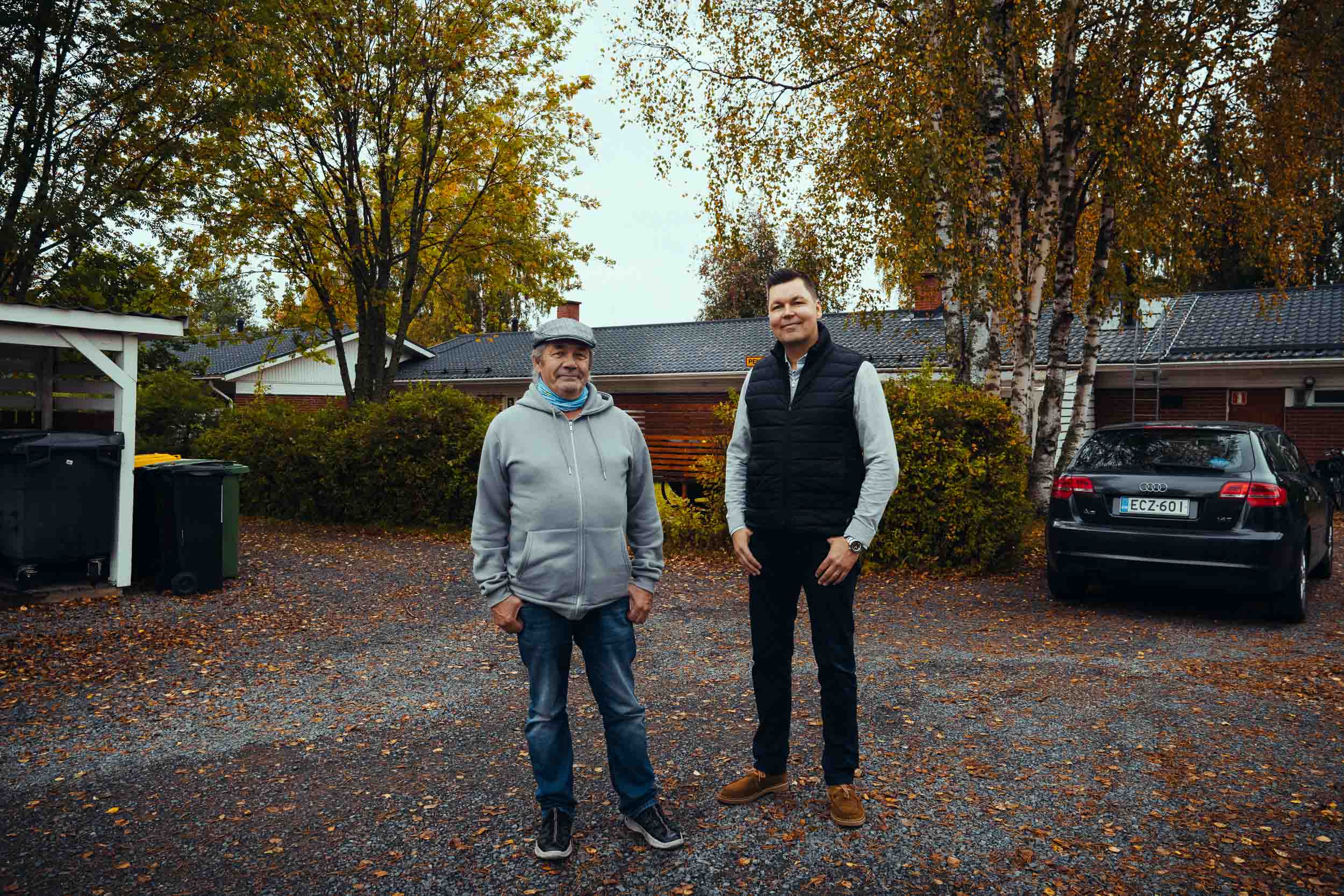Green District Heating Significantly Reduced Emissions
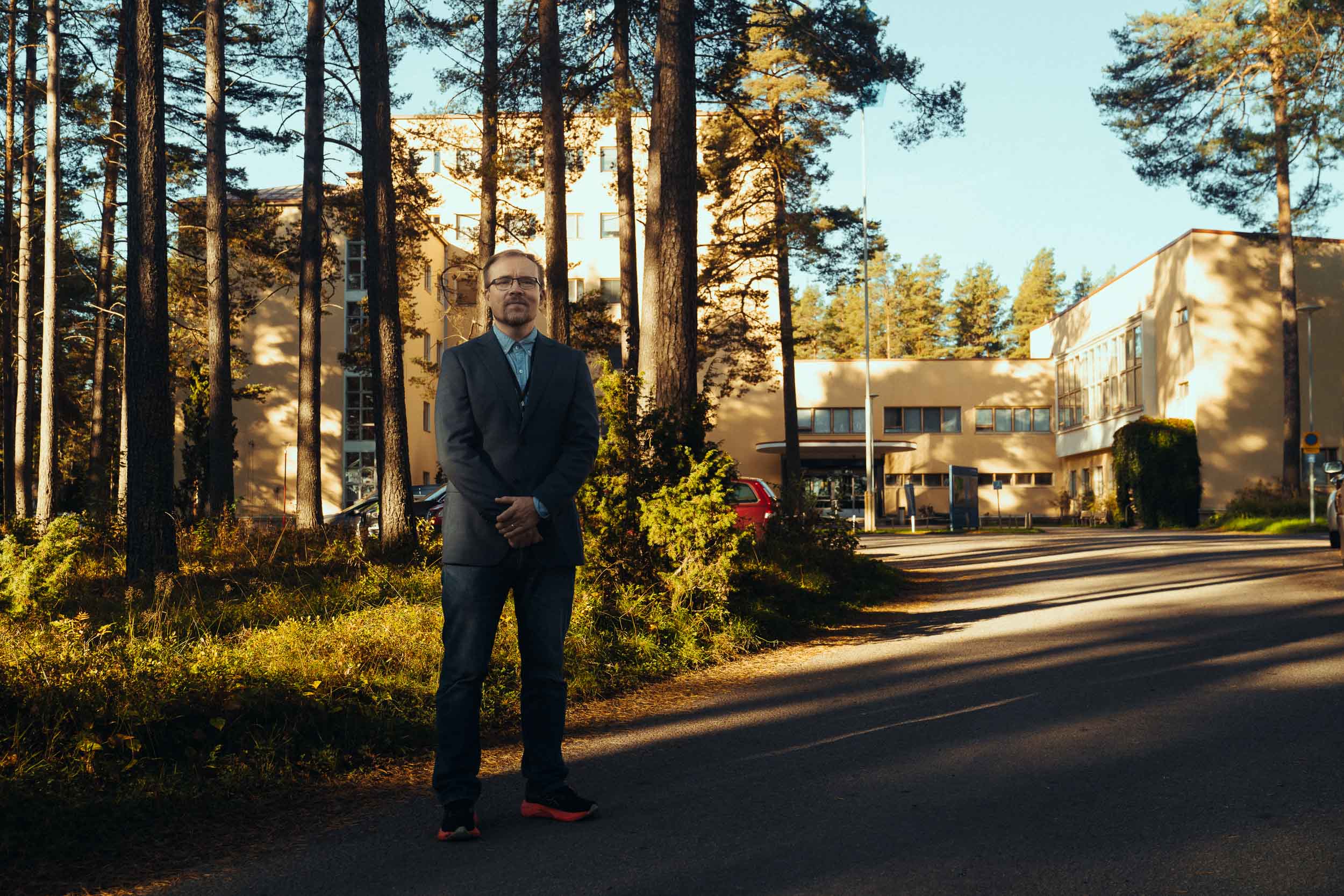
Zero-emission district heating and electricity. That’s what Folkhälsan uses extensively across its 12 buildings in the Östanlid area of Jakobstad. The price difference between traditional and green district heating is negligible, but the difference in carbon emissions is significant. Thanks to this investment in Jakobstad, Folkhälsan has reduced emissions across its entire property portfolio by 17 percent.
The tall, round brick chimney reveals how heating was managed in the 1940s at the tuberculosis sanatorium. The old boiler room still remains, with three massive boilers, and we can only imagine what used to come out of that chimney back when no one cared about carbon dioxide emissions.
“The contrast is clear here—just think that we’ve gone from this dirty form of heating to completely emission-free district heating. A lot has changed in just a few decades when it comes to emissions,” says Tommy Forsman, Property Manager at Folkhälsans Fastigheter Ab in Jakobstad.
Counting euros, megawatts and carbon
Tommy Forsman is an economist who initially focused on euros and megawatts, until he realized there was a third key variable to consider in his property calculations—carbon dioxide. Buildings account for one quarter of Finland’s energy consumption and generate about 30 percent of the country’s carbon emissions.
“Environmental goals set by the government can seem ambitious when it comes to real estate, but when I started calculating our buildings’ emissions, I understood how significant the impact can be when we look at the big picture. Property owners in Finland can really make a difference by cutting emissions,” he says.
Folkhälsan actively works to reduce carbon emissions, phase out fossil fuels and use renewable energy across its properties, located at around 40 addresses throughout Swedish-speaking Finland. The switch to green district heating in Östanlid on January 1, 2024, had a direct and noticeable impact on the total emissions from Folkhälsan’s properties, which together cover 150,000 square meters.
“The Folkhälsanhuset Östanlid dates back to the 1940s and was one of the three buildings that generated the most emissions among Folkhälsan’s properties in Swedish-speaking Finland. By switching to zero-emission district heating, we were immediately able to reduce the group’s carbon dioxide emissions by 17 percent,” says Forsman.
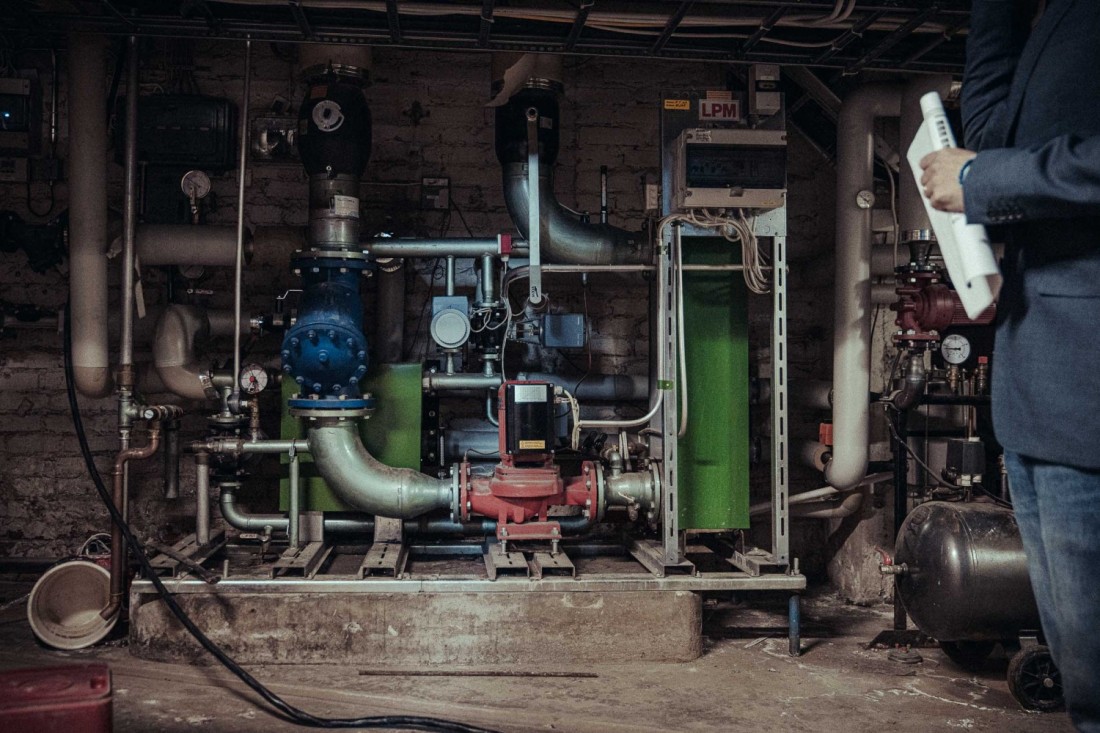
Green district heating is only 2 percent more expensive
The transition to green district heating is very straightforward. Tommy Forsman signed an agreement and received a certificate confirming that Östanlid uses certified district heating that is entirely emission-free. In practice, this means the heat is produced at the Alholmens Kraft power plant using forest-based biofuel from UPM’s pulp mill.
So how much did the price increase with the new agreement?
“We pay just one euro more per megawatt hour for green district heating. For us, that means an added cost of 3000 euros per year. That’s not much—we can easily save that amount by increasing energy efficiency elsewhere in the operation.”
Reliability is most important
With an annual consumption of 3000 megawatt hours, price matters—but Tommy Forsman emphasizes that operational reliability matters even more. The district heating center provides base heating to the radiators, hot water and energy for the ventilation system and therapy pool.
“The temperature in the therapy pool is 31 degrees. We have over 20,000 users per year, and the pool accounts for 20 percent of our total energy consumption. Folkhälsan is a major energy consumer, and there can be no interruptions. District heating is reliable and virtually maintenance-free, which we greatly appreciate.”
A district heating customer in three ways
Tommy monitors electricity and district heating usage on an hourly basis. He does this not only in his job—he lives in a home with district heating and is active in several housing companies whose buildings are also heated this way
“It’s been financially beneficial for housing companies to have district heating, and price development has been reasonable. Where it’s possible to connect a property to the district heating network, it’s clearly the best option, especially for high consumption.”
Tommy is satisfied with Herrfors as a supplier, both in terms of customer service and environmental efforts.
“Herrfors has reduced its carbon emissions impressively compared to other energy companies in Finland. Their investments in cleaner production also enable end customers to reduce their own emissions. Everyone benefits from this.”
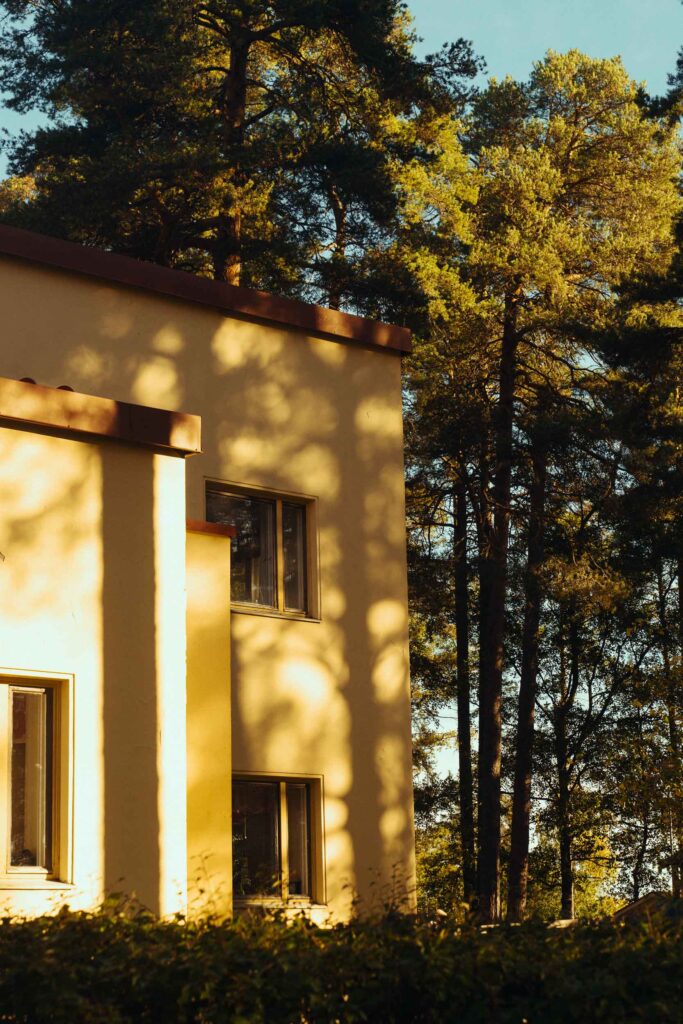
The story of Folkhälsanhuset Östanlid:
- In 1940, the property was called Östanlid Sanatorium, when the main building along with the office and residential buildings were inaugurated among the majestic pine trees in the Östanpå district of Jakobstad.
- The plot covers 13 hectares and includes 12 buildings with a total floor area of 11,400 square meters.
- During the war years, Östanlid served as a military hospital and later as a tuberculosis hospital until the 1970s, when it became part of the Vaasa Hospital District.
- The hospital was renovated between 1986 and 1989. The buildings were heated with oil until the year 2000, when they were connected to the district heating network in Jakobstad.
- The Folkhälsan Society in Finland purchased Östanlid Hospital in 2003. The main building was renovated from 2003 to 2008. The activity center was renamed Folkhälsanhuset Östanlid.
- The Folkhälsan Society owns the group company Folkhälsans Fastigheter Ab, which is responsible for the maintenance and management of Folkhälsan’s operational properties at approximately 40 locations across Swedish-speaking Finland.
- As of January 1, 2024, Folkhälsan Fastigheter Ab in Jakobstad uses only zero-emission district heating in its 12 buildings at Östanlid.
- At Östanlid, services include housing for seniors, rehabilitation and health-promoting activities. The site hosts the health-focused after-school club Fritids and the daytime activity center Friska tag, which offers various activities for retirees and people at home during the day. There is also a therapy pool, gym and a lunch restaurant on the premises.
Sign a green district heating contract
Herrfors offers district heating that is 100 percent based on certified renewable energy sources. Certification is carried out through guarantees of origin, using a system similar to that applied to electricity throughout Europe. The Finnish Energy Authority is responsible for the guarantees of origin registry and monitors compliance with legislation. The added cost for certification is €1.27 per MWh including VAT, which equals 0.127 cents per kWh. The VAT-free price supplement is €1.00 per MWh. Contact us to learn more!

